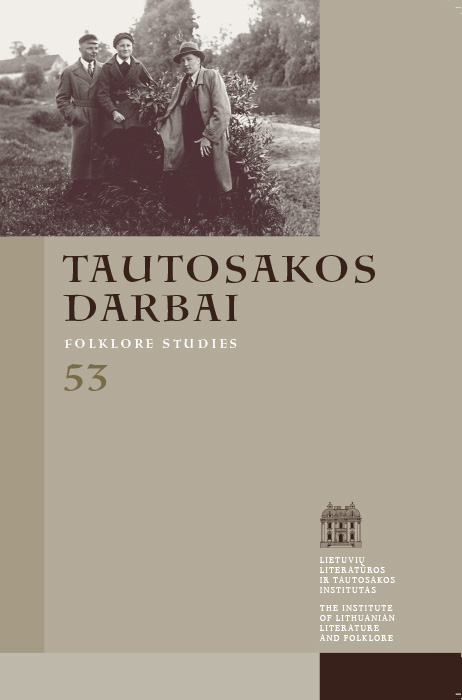Tradition or (and) Creative Freedom: “Genealogy” of Food Recipes in Lithuania
Abstract
The subject of the article is implication of concepts of tradition and creative freedom in gastronomical culture of the 17th–19th century Lithuania. The study follows two methodological paths: theoretical definition of the above-mentioned concepts, adapting them to investigate gastronomical culture, and empirical research – namely, analysis of the borscht recipes published in the books on gastronomy of the 17th–19th century Lithuania.
When seeking theoretical definition of the relationship between tradition and creative freedom in gastronomical culture, it is possible to use the theory of semiosphere coined by Yuri Lotman, according to which opposition between tradition and creative freedom is perceived as systemic and mutual interaction of two factors belonging to the same semiosphere rather than two mutually excluding factors. In the context of semiosphere, the source of this research (a manuscript or published recipe) is perceived as a descriptive structure turning a dynamic object (continuous gastronomical tradition) into a static pattern – a kind of momentous photograph. When this fixation takes place, knowledge characteristic to the gastronomical culture of certain time and space is recoded and turns from even reality into a discreet one (a recipe is a discreet text). Simultaneously, a transition takes place from more liberal and less structured level of knowledge towards more strictly structured level of data and information.
When interpreting the relationship between tradition and creative freedom in the Lithuanian gastronomical culture (as a case study of the borscht recipe development), it is possible to distinguish two different self-regulative mechanisms in the structure of this semiosphere. The first of them can be interpreted using the concept of gusteme formulated by Claude LéviStrauss and making the basis for the self-regulative mechanism that enforces and supports the gastronomical tradition, blocking the creative freedom in the kitchen. However, analysis of the gastronomical culture reveals it as an evolving system, open to innovations. Such development in gustemes can be explained by the second self-regulative mechanism of the gastronomical culture as a structure of semiosphere, based on the system theory developed by Ilya Prigogine and maintaining that gastronomical culture is an open evolving system experiencing periods of even development and mutations. The main “mutagenic” factors encouraging changes in the gastronomical culture include activities of creative individuals and cultural context. In the long-term historical development, interaction of both selfregulative mechanisms of the gastronomical culture as structure of semiosphere ensures effective interaction of tradition and creative freedom. Creative freedom is impossible in the gastronomical culture without good knowledge of tradition, while immutable tradition that does not integrate products of creative freedom eventually becomes dead.
Downloads
Most read articles by the same author(s)
- Rimvydas Laužikas, Consumption of Drinks as Representation of Community in the Culture of Nobility of the 17th–18th Centuries , Tautosakos darbai: Vol. 51 (2016)
